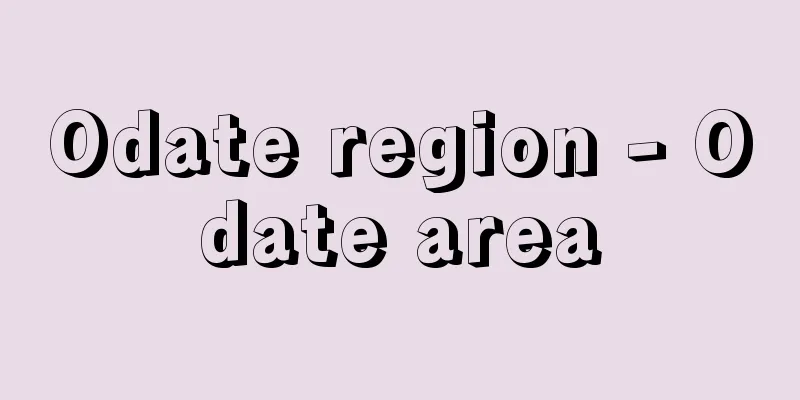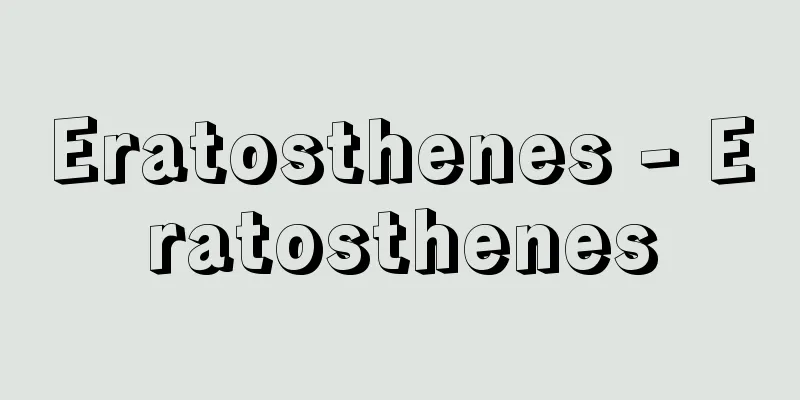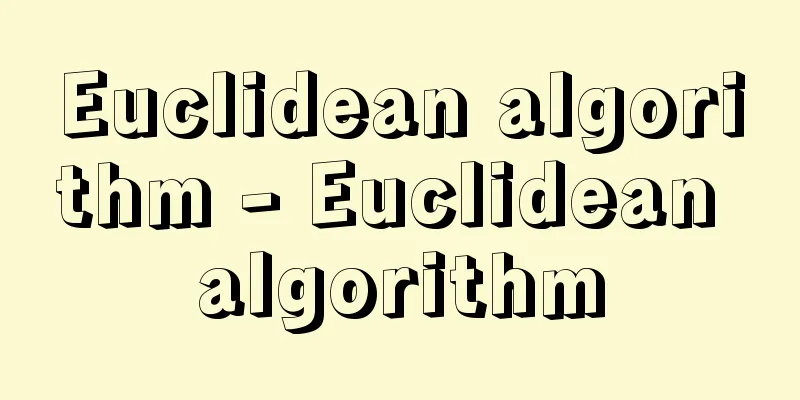Kouwakamai - Kouwakamai

|
One of the performing arts that flourished from the Muromachi to Edo periods. It is also called Kusemai, Mai, and Maimai. The genealogy of the Kōwaka families is said to have been founded by Kōwakamaru Naoaki, the grandson of Momoi Naotsune, a military commander from the Northern and Southern Courts period, but these were created in the Edo period and are nothing more than legends. As Kōwakamai was commonly called Kusemai, it descended from Kusemai, which was popular before the mid-Muromachi period, and it is said that its performers were low-class people such as Shomoji. The first recorded appearance of the word Kōwaka Tayu was in the entry for Kakitsu 2 (1442) in the Kankenki, but by that time Kōwakamai existed in various places, and other records suggest that Echizen Kōwaka in particular was well-received by the public. Kōwakamai takes its subject matter from war tales such as "The Tale of the Heike" and "The Tale of the Soga" and contains strong elements of samurai dance, which led to its popularity among Sengoku warlords such as Oda Nobunaga and Toyotomi Hideyoshi, and under their patronage, Echizen Kōwaka gained a privileged social status and prospered. The lyrics of Kōwakamai are called "dance books," and 50 pieces are known. In the Edo period, Echizen Kōwakamai was once given a higher ranking than Nohgaku, the shogunate's ceremonial music, but it gradually declined and eventually disappeared with the collapse of the shogunate. Today, the Daigashira lineage of Kowakamai is handed down in Oe, Setaka-cho, Miyawaka City, Fukuoka Prefecture. It is held on January 20th at the dance hall of Oe Tenmangu Shrine, and eight pieces, including "Ataka" and "Takadachi," can be performed. According to the "Daigashiromai Genealogy" handed down in Oe, a disciple of Kowaka taught it to a retainer of the Kamachi family, lord of Yamashita Castle in Chikugo (southern Fukuoka Prefecture), in 1582 (Tensho 10), but the veracity of this is uncertain. The only accompaniment is a small drum, and the long lyrics are sung and recited by the three actors, the tayu, shite, and waki. It mainly consists of chanting and narration, and does not involve any movements that could be called dancing; the tayu simply steps around the stage in time with the beat. However, as it is the only Kōwakamai dance handed down today, it is of great value and has been designated an Important Intangible Folk Cultural Property of Japan. [Shigeru Takayama] "Kowaka Dance Collection by Ken Sasano (1943, Daiichi Shobo)" ▽ "Kowaka Dance, edited and annotated by Shigeru Araki, Hiroshi Ikeda, and Kisso Yamamoto, 3 volumes (Heibonsha, Toyo Bunko)" Oe's Kowakamai dance from Setaka Town. Nationally designated important intangible folk cultural property Oe Tenmangu Shrine, Miyama City, Fukuoka Prefecture © Fukuoka Tourism Federation Dance of Yuki Source: Shogakukan Encyclopedia Nipponica About Encyclopedia Nipponica Information | Legend |
|
室町時代から江戸時代にかけて隆盛した芸能の一つ。曲舞(くせまい)、舞(まい)、舞々(まいまい)ともいわれる。その起源について幸若諸家の系図は、南北朝時代の武将桃井直常(なおつね)の孫幸若丸直詮(なおあき)が創始したと伝えるが、これらは江戸時代になってから作成されたもので、伝説の域を出ない。幸若舞は一般に曲舞とも称せられたように、室町中期以前に流行していた曲舞の流れをくむものであり、その担い手は声聞師(しょうもじ)などの賤民(せんみん)階層であったともいわれている。幸若大夫(たゆう)ということばの記録上の初見は『管見記(かんけんき)』嘉吉(かきつ)2年(1442)の条であるが、このころには各地に幸若舞が存在しており、なかでも越前(えちぜん)幸若が世間の好評を得ていたようすが他の記録からうかがわれる。幸若舞は題材を『平家物語』『曽我(そが)物語』などの軍記物語に取材し、武士舞的な要素が濃いところから、織田信長、豊臣(とよとみ)秀吉などの戦国武将に愛好され、その庇護下にあった越前幸若は社会的に恵まれた地位を得て繁栄した。幸若舞の詞章は「舞の本」といわれ、50曲が知られる。江戸時代に入ると越前幸若は幕府の式楽としての能楽よりも上席を遇せられる一時期もあったが、しだいに衰退し、やがて幕府崩壊とともに滅亡した。 今日では福岡県みやま市瀬高町大江に大頭(だいがしら)系の幸若舞が伝承されている。1月20日に大江天満神社の舞堂で行われ、『安宅(あたか)』『高館(たかだち)』など8曲が上演可能。大江に伝わる『大頭舞之系図』によると、幸若の弟子筋にあたる者が1582年(天正10)に、筑後(ちくご)(福岡県南部)山下城主蒲池(かまち)家家来に伝授したとあるが、真偽のほどは定かでない。囃子(はやし)は小鼓のみで、大夫、シテ、ワキの3人が長い詞章を分けて謡い語る。謡と語りが主で、舞というほどの所作はなく、拍子にかかるツメで太夫が舞台を踏んで回るにすぎないが、今日伝承する唯一の幸若舞であるだけに貴重な意義があり、国の重要無形民俗文化財に指定されている。 [高山 茂] 『笹野堅著『幸若舞曲集』(1943・第一書房)』▽『荒木繁・池田廣司・山本吉左右編・注『幸若舞』全3巻(平凡社・東洋文庫)』 瀬高町大江の幸若舞。国指定重要無形民俗文化財 福岡県みやま市 大江天満神社©公益社団法人福岡県観光連盟"> 幸若舞 出典 小学館 日本大百科全書(ニッポニカ)日本大百科全書(ニッポニカ)について 情報 | 凡例 |
Recommend
Kou Kenshi - Koukenshi
A Taoist priest from the Northern Wei period in C...
Dantesca
...When a backrest and armrests were added, it be...
Influenza bacillus - Influenza bacillus
...Short bacilli are called short bacilli, and lo...
Megalithic tombs
...They are called collective graves. In the Pale...
Bubolus quarlesi (English spelling) Bubolusquarlesi
…[Yoshinori Imaizumi]. … *Some of the terminology...
International law - kokusaihou (English spelling) international law
It is also called international public law. Until...
Great Crossing of Ise Bay - Isewanoudanouwatari
...Long-distance swimming, called Encho (Shinden-...
The Legend of Alexander the Great
…His plans to circumnavigate the Arabian Peninsul...
Aéroport de Paris-Charles-de-Gaulle (English)
…It is managed by the Munich Airport Authority. P...
Medical license - Ishimenkyo
...It was enacted in 1948 along with the Medical ...
Racing competition - Kyousokyogi
…If the same athlete makes two false starts, he o...
Thread-Wap Friends
...In the Edo period, the Itowarifu Nakama, who w...
Noble's land - Kugeryo
A general term for the estates of the Imperial fam...
Hormizd IV (English spelling)
…However, the kingship did not necessarily enjoy ...
Eucharist Controversy
Also known as the Eucharistic controversy, this wa...









